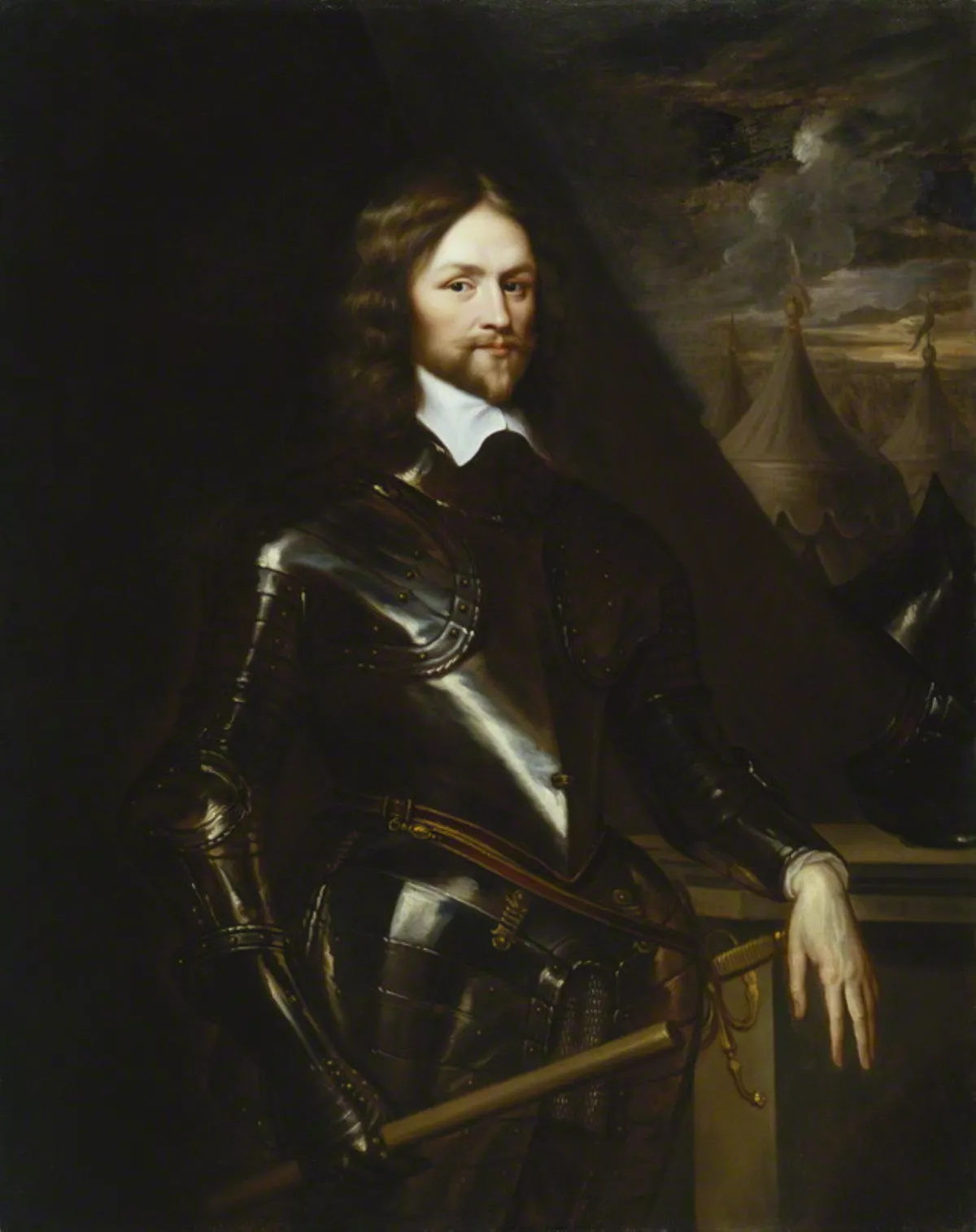 1.
1. Henry Ireton was an English general in the Parliamentarian army during the Wars of the Three Kingdoms, and a son-in-law of Oliver Cromwell.

 1.
1. Henry Ireton was an English general in the Parliamentarian army during the Wars of the Three Kingdoms, and a son-in-law of Oliver Cromwell.
Henry Ireton became a gentleman commoner of Trinity College, Oxford, in 1626, graduated with a Bachelor of Arts in 1629, and entered the Middle Temple the same year.
Henry Ireton was made deputy-governor of the Isle of Ely by Oliver Cromwell, and served under the Earl of Manchester in the Yorkshire campaign and at the second Battle of Newbury, afterward supporting Cromwell in his accusations of incompetency against the Earl.
Henry Ireton argued for these in the negotiations of the army with Parliament, and in the conferences with the King, Charles I, being the person chiefly entrusted with the drawing up of the army proposals, including the manifesto called "The Heads of the Proposals", which proposed a constitutional monarchy.
Henry Ireton tried to prevent the breach between the army and parliament, but when it happened, he supported the negotiations with the King until his actions made him unpopular.
Henry Ireton finally became convinced of the hopelessness of dealing with King Charles, and after the King's flight to the Isle of Wight, treated his further proposals with coldness and urged the parliament to establish an administration without him.
Henry Ireton served under Thomas Fairfax in the Second Civil War in the campaigns in Kent and Essex, although Fairfax, as Lord General, and not Henry Ireton as is sometimes believed, was responsible for the executions of Sir Charles Lucas and Sir George Lisle at Colchester.
Henry Ireton was active in the choice to purge rather than re-elect Parliament and supported the second Leveller Agreement of the People.
Henry Ireton sat on the King's trial and was one of the commissioners who signed the death warrant.
Henry Ireton's regiment was chosen by lot to accompany Cromwell in his Irish campaign.
Henry Ireton was appointed major-general and after the conquest of the south of Ireland, Lord President of Munster.
Henry Ireton went over with John Cook with a brief to reform the law of Ireland, to anglicise it, and to make it a model for a new settlement of English law.
Henry Ireton appealed to the English Parliament to publish lenient surrender terms for Irish Catholics, to end their resistance, but this was refused.
Henry Ireton systematically constructed trenches to bring his siege guns within range of the walls and stationed a parliamentary fleet off the city to prevent it being supplied.
Henry Ireton wanted the Irish commander, Hugh Dubh O'Neill hanged, but Edmund Ludlow cancelled the order after Ireton's death.
Ireton Road in Market Harborough was named after Henry Ireton, while Ireton's Way is a very straight part of the A142 between Ely and Chatteris, built by Ireton when he was commanding East Anglian forces as a causeway across the flooded Fens around the River Ouse to rush troops and supplies over when resisting Royalist attack from Lincolnshire and the Midlands.
An Henry Ireton Avenue exists in Walton-on-Thames as well as 'Henry Ireton's House' on the high street.
Henry Ireton's portrait continues to hang in the dining hall of Trinity College, Oxford.
Henry Ireton is portrayed as a minor character in Rosemary Sutcliff's 1953 historical fiction novel Simon.